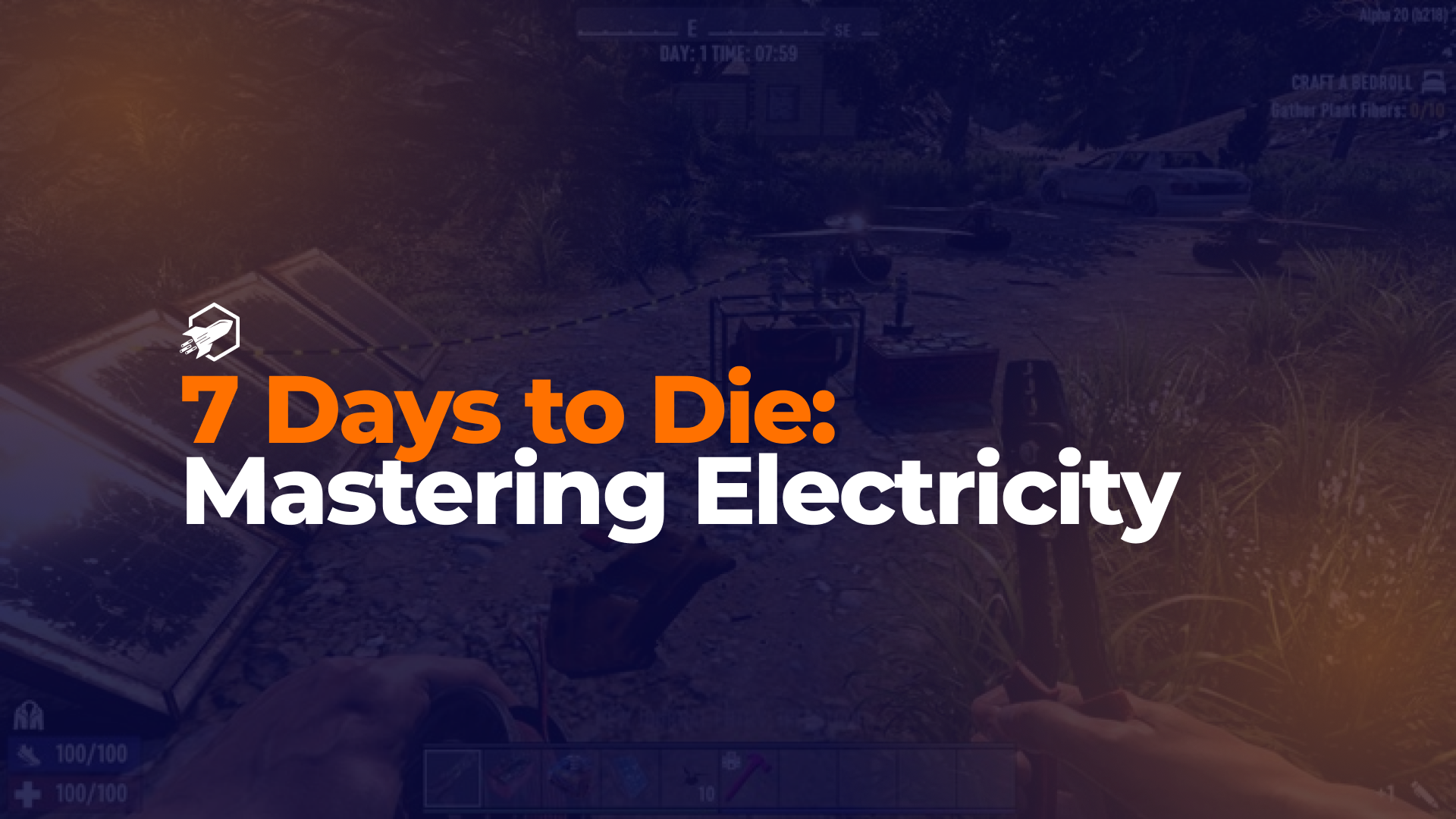Electricity is an essential mechanic in 7 Days to Die, empowering survivors to upgrade their bases with lighting, traps, automated doors, and more. Setting up a functional electrical system can seem hard at first, but this guide will walk you through the basics, requirements, and tips to ensure you have power running smoothly through your base.
Why Electricity Matters in 7 Days to Die
Electricity brings your base to life by powering many devices that keep you safe and efficient, such as:
- Lights to illuminate dark areas
- Traps like blade traps and turrets
- Motion Sensors and automated systems for base defense
- Doors and switches for automation and convenience
Getting Started with Electricity
1. The Basics
At its core, 7 Days to Die’s electrical system operates on a single-in, multi-out rule:
- Single-in: Only one power source (e.g., Generator Bank, Battery Bank) provides electricity to a circuit at a time.
- Multi-out: Each power source can connect to multiple devices, but there are limits based on wattage and wire range.
You’ll need the following essentials to set up your first circuit:
- A Power Source (Generator Bank, Battery Bank, or Solar Bank).
- The Wire Tool to create connections between devices.
- Electrical devices (e.g., lights, traps, relays).
Power Sources
There are three main power sources in the game:
- Battery Bank: Uses Lead Car Batteries as power cells, making it an eco-friendly option.
- Crafting: Requires 10 Forged Iron, 11 Electrical Parts, and 6 Scrap Polymers.
- Power Source: Lead Car Batteries, which can be crafted or found.
- Generator Bank: Fueled by Gas Cans and powered with Engines, this is a reliable mid-game solution.
- Crafting: Requires 15 Forged Iron, 15 Mechanical Parts, and 21 Electrical Parts.
- Power Source: Engines, which must be scavenged from sedans or Working Stiffs Crates.
- Solar Bank (Advanced): An environmentally friendly option that uses solar cells. Typically paired with Battery Banks for continuous power supply.
Connecting Devices
Once you’ve set up your power source, follow these steps to connect it to devices:
- Equip the Wire Tool.
- Right-click the power source to create a connection.
- Right-click the desired device (e.g., a light or trap) to complete the connection.
Tips:
- Each connection consumes wattage from the power source. Ensure the total wattage of all devices doesn’t exceed your power source’s capacity.
- To sever a connection, point at the wire and left-click with the Wire Tool.
Extending Range with Relays
Relays are critical for extending the distance between power sources and devices. Without relays, wires can only stretch up to 10 blocks.
- Crafting Relays: Requires 3 Forged Iron and 1 Electrical Part per relay.
- Types of Relays: Regular relays and timer relays. Timer relays allow circuits to activate at specific times, such as turning lights on at night.
Relays also help keep wiring organized and ensure efficient energy distribution. Be mindful of their wattage consumption when calculating your power needs.
Understanding Wattage
Every power source provides a certain amount of wattage, and every device consumes wattage. To avoid power issues:
- Add up the wattage of all devices on a circuit.
- Ensure your power source can provide at least the total wattage required.
For example:
- A Generator Bank with 2 Engines provides 100 watts.
- If you’re powering 3 blade traps (20W each) and 5 lights (5W each), you’ll need a total of 85W, which is within the generator’s capacity.
Using Switches for Efficiency
Switches allow you to control power flow and conserve wattage:
- Manual Switches: Players toggle these switches on or off.
- Automated Switches: Devices like motion sensors trigger circuits based on events (e.g., detecting an enemy).
Example: A motion sensor (5W) can control a turret (15W). When inactive, the turret won’t consume power, saving energy for when it’s most needed.
Optimizing Your Circuit
- Use Separate Connections: Avoid chaining multiple devices on one connection. This setup minimizes the risk of complete power loss if one connection is severed.
- Plan for Horde Nights: Make sure critical traps and defenses have their own dedicated circuits to ensure reliability under pressure.
Pro Tips for Managing Electricity
- Level Up Advanced Engineering: Unlock crafting recipes and boost your electrical skills.
- Read Schematics: The Basics of Electricity schematic unlocks several key recipes, including Electric Wire Relays and Battery Banks.
- Scavenge Regularly: Items like Engines and Electrical Parts are essential for maintaining your electrical system.
Conclusion
Electricity in 7 Days to Die is a game-changer, transforming your base into a secure, automated fortress. With this guide, you’re ready to power your devices, defend against the hordes, and take your survival skills to the next level. Start crafting, connecting, and conquering—because in the world of 7 Days to Die, preparation is everything!


